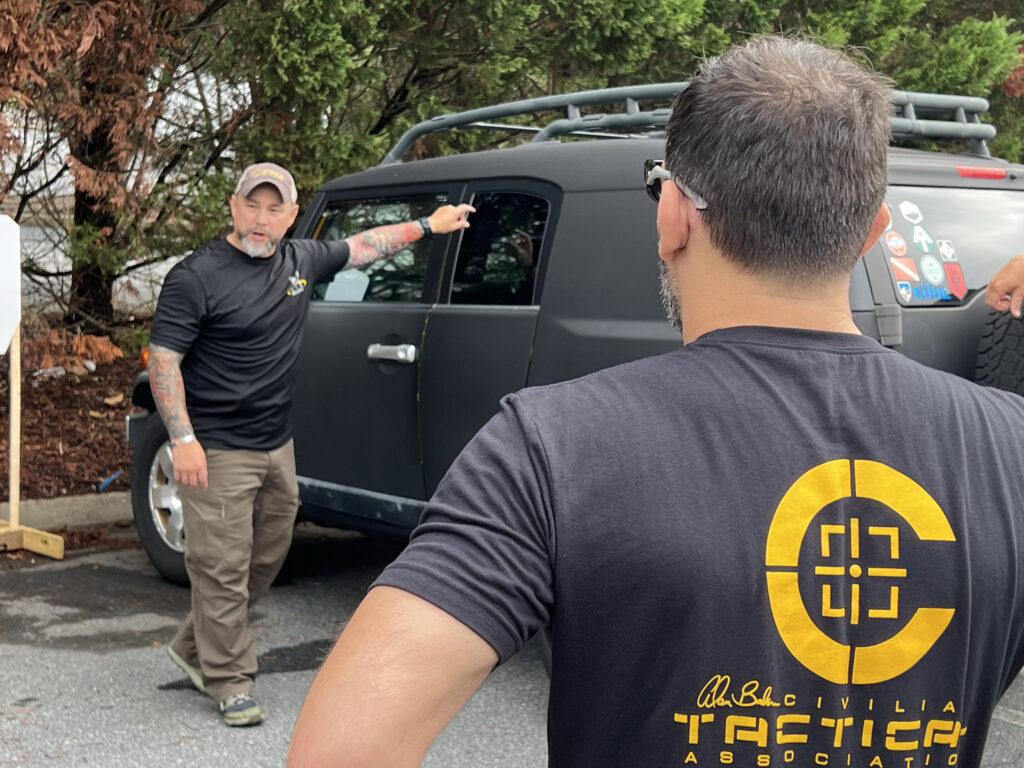
In the world of executive protection, a singular lesson stands out prominently – think like your adversary. By viewing yourself through the eyes of a predator, you unlock the ability to preemptively understand their motives, thereby heightening your chances of countering a threat.
Having served as an instructor at the renowned Executive Protection Institute for over 14 years, I’ve been privileged to see firsthand the value of this unique perspective. It’s a mindset imparted to professional protection agents, and its merits are undeniable. But can ordinary individuals incorporate this insight into their everyday lives? Particularly concerning one of the most common and vulnerable scenarios we all face: operating and navigating around vehicles.
Vehicles: An Unavoidable Nexus of Crime
Vehicles often find themselves at the epicenter of violent crimes, from carjackings to road rage and even muggings in dimly lit parking lots. Such situations demand swift decisions, the primary objective being to distance oneself from the imminent threat – or in tactical vocabulary, “get off the X.” The key to successful evasion lies in reactive measures and the proactive habits one cultivates.
Daily Vehicle Habits: Lessons from the Security World
In the professional world of security driving, there are practices that, when implemented daily, can dramatically bolster personal safety. Here’s a curated list of habits inspired by the top-tier security world:
- Car Medical Kit: Always keep a medical kit handy. Emergencies don’t knock before arriving. Also, seek training on the use of the items you are carrying.
- Strategic Parking: Whether it’s backing into spots for a quick exit or choosing locations with ample visibility, always park with an escape in mind.
- Red Light Tactics: At traffic signals, ensure you can see the tires of the car in front, granting you maneuvering space. Moreover, offset your car slightly to monitor passenger doors – an extra layer of vigilance.
- Vehicle-Firearm Training: Being armed is one thing; using it effectively, especially in confined spaces like vehicles, is another. Pursue specialized training to ensure your firearm serves as a genuine line of defense.
- Defensive Vehicle Tactics: A car isn’t just a mode of transport – it can be a weapon, shield, or escape route. Learn the tactics.
Furthermore, basic but powerful practices include:
- Awareness of Approach: Always scan your surroundings before approaching your vehicle.
- Swift Entry and Exit: Minimize vulnerability by reducing the time taken to enter or leave your vehicle.
- Routine Variation: Randomize your travel routes and timings to stay unpredictable.
- Emergency Preparedness: Equip your car with emergency tools and kits.
- Defensive Driving Courses: Empower yourself with evasive driving techniques.
- Trust Your Instincts: Trust your gut feelings if a situation feels off. They’re your first line of defense.
Introducing the C-Tac System: The Bridge to Self-Protection
While the tactics above are invaluable, their effectiveness is amplified manifold when accompanied by structured training. This is where the C-Tac – Civilian Tactical Training Association plays a pivotal role. A paradigm aimed at bridging the chasm between martial arts and real-world self-protection, C-Tac offers a comprehensive approach to personal safety.

Interested individuals looking to augment their safety arsenal with battle-tested techniques should consider diving deeper into the C-Tac system. It covers the above facets in detail and goes above and beyond, ensuring that every civilian has the tools, training, and mindset to protect themselves and their loved ones.
For more on C-Tac and to connect with certified instructors, visit civtaccoach.com. It’s not just about learning tactics; it’s about adopting a lifestyle of preparedness and vigilance.
The C-Tac® system was innovatively conceptualized and brought to fruition by Alan Baker, with the primary goal of empowering individuals to be adequately prepared for not just self-defense situations but a myriad of potential circumstances life may bring. The conception of the C-Tac® system stemmed from Alan’s observation of the scarcity of practical, comprehensive, and meaningful training systems addressing this need. He sought to cut through the swathes of well-marketed but ultimately ineffective programs that are readily available.
For those interested in extending their journey with the C-Tac® system and exploring the opportunity to become a C-Tac® Instructor, we encourage you to visit our association website here: https://civtaccoach.com/
Should you have any questions about the program, or if you simply wish to engage in further dialogue about C-Tac® and its principles, please feel free to reach out to Coach Baker or any member of our committed team at any time. We are here to guide and support you on your personal safety, awareness, and empowerment journey.

